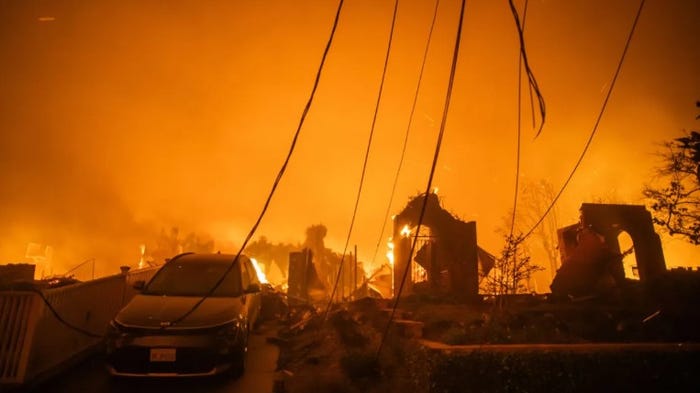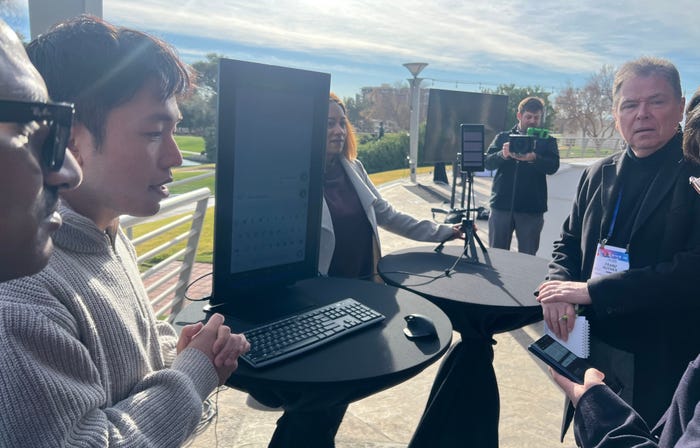Solving in-building noise issuesSolving in-building noise issues
There are several reasons why in-building coverage can suffer, but a common and often-overlooked reason is the noise floor that is present within the building in various areas where radio coverage is required.
May 17, 2012
Do your users complain of poor coverage in buildings even though you have a distributed antenna system or a bi-directional amplifier in operation? After all, these devices are supposed to augment coverage in these areas. There are several reasons why in-building coverage can suffer, but a common and often-overlooked reason is the noise floor that is present within the building in various areas where radio coverage is required.
In-building coverage systems can be of passive design in that a donor antenna is placed outside of a structure and a feed line is connected from that donor antenna to an antenna mounted inside, in a strategic location to provide optimum coverage indoors. An in-building system also can be of an active design, channelized in such a manner that only specific channels are enhanced for indoor coverage. An active design also can be an elaborate concentration of multiple antennas connected via splitters to maximize indoor coverage performance within large structures. But no matter the in-building design, RF noise affects them all.
There are many methods and devices employed to measure noise, but one tried-and-true method is to measure the noise on your exact operating-site receive (uplink) frequency. While the method of measurement is beyond the scope of this article, it is important to understand the effects of a high noise floor on an in-building environment. A correctly engineered in-building system will account for the noise floor in the initial design. Never forget that the initial design may have met coverage requirements initially upon the installation and acceptance tests; however, the noise floor could have changed since implementation.
A noise study in most buildings will indicate that specific areas within a given structure are more prone to RF noise than others. Basements, equipment rooms, rooftop penthouses and similar spaces typically will yield higher RF noise than floors mid-structure. This, however, is not always the case. Electrical contactors, fluorescent lights (including compact fluorescent lights), older ballasts, neon electrical signs, elevator relay logic boards, electric motors, noisy transmitters and many other electrical devices generate and emit detrimental RF noise within the environment in which your in-building system must perform. Most equipment-generated RF noise is so low that its effects are not much of a problem. It only is a problem when the RF noise level is high enough that your system will suffer.
In simplistic terms, when the noise floor is low, your subscriber end-users radios can operate on the fringe areas of in-building coverage. However, as the noise floor rises, the in-building receiver coverage area shrinks. When this happens, the subscriber end-user is forced to operate closer to the in-building receive antenna. An effective sensitivity environment of -110 dBm is a lot easier for a site receiver to operate in compared with a -90 dBm level. Another sign of this problem is when the subscriber can hear the downlink with a high delivered audio quality, or DAQ, but other users cannot receive that same subscriber’s transmission; this occurs because the first user has to overcome the noise floor in the location of the receive antenna. Remember that an improperly balanced indoor system will yield similar results in that uplink and downlink coverage (talk in vs. talk out) will be drastically different. For this reason, never use more power than necessary to achieve required coverage. If in doubt about the noise floor at the receive antennas inside your buildings, measure it or hire a qualified consultant to do so. Another point to consider concerns in-building systems that are of a distributed design and use multiple antennas connected to a splitter that in turn is connected to a receiver; noise at any one of the antennas will impact the receiver and thus will impact other required coverage areas within your building that exhibit a low noise floor.
A properly designed in-building system will take into consideration many parameters, such as frequency band of operation, layout of the building, the attenuation of the building construction materials and coverage requirements. In-building coverage-modeling software will show predicted coverage based on a particular design. RF noise is not a part of the propagation-model parameters but should be measured and accounted for in the link budget.
After careful design review, use your assigned frequency band and antenna placement to your advantage. For example, at VHF you may discover that in a distributed-antenna design, even though your indoor propagation models demonstrate adequate coverage, the indoor antennas may need to be closer together to ensure that the end-users always will be close enough to one of the antennas to overcome the ambient RF noise present in the area. On the other hand, too many antennas in a distributed antenna system can have an adverse effect on overall in-building performance, as the additional antennas introduce more noise into the overall system design.
In certain conditions, especially at outdoor sites, the noise floor can vary depending on the time of day or night, the operating frequency band and atmospheric conditions. The ambient noise inside buildings typically is more consistent and more predictable. Also, never forget that other users operating inside your building on the same frequency band can impact this noise figure depending on the cleanliness of their transmitters. You may be surprised to find just how noisy some transmitters are.
Remember, no test is as good as a real-world test. On a new in-building installation, always complete a DAQ walk test. This helps you understand the end-users’ coverage areas but more importantly establishes a baseline for detecting in-building system degradation in the future. Next, as a part of system preventive maintenance, add a DAQ walk test to your schedule for these in-building systems. Now, because you have a baseline, any variance indicates something has changed, either in relation to noise or a component failure — or perhaps a maintenance worker inadvertently has crushed a feed line.
RF noise is the enemy that the radio technician cannot see. Its effects can be measured anywhere radios are used and we can witness its impact on end-users. In-building coverage equipment is designed to enhance radio coverage inside buildings where it is needed most by first responders. Sharing experiences with fellow radio professionals is a sure way to help each other ensure that our radio systems work, no matter how difficult the environment.
Ira Wiesenfeld, P.E., has been involved with commercial radio systems since 1966, and has experience with land-mobile-radio, paging and military communications systems. He holds an FCC general radiotelephone operator’s license and is the author of Wiring for Wireless Sites, as well as many articles in various magazines. Wiesenfeld can be reached at [email protected].
Christopher Dalton has designed, staged and implemented virtually every kind of LMR system in his two-decade-long career, including conventional, trunked, simulcast, Project 25, single-site and multisite. He holds an FCC general radiotelephone operator’s license. Dalton can be reached at [email protected].
Related stories:



